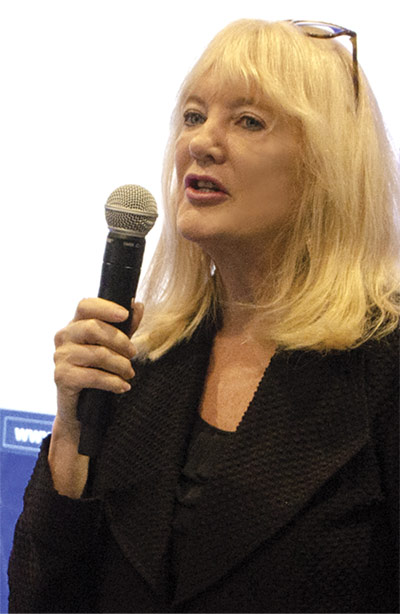
3 Questions with Marta Hall
 Photonics Media recently got in touch with Velodyne Lidar Inc. regarding its World
Safety Summit on Autonomous Technology that took place Oct. 2. Marta Hall,
Velodyne’s president and chief business development officer, answered our questions.
Photonics Media recently got in touch with Velodyne Lidar Inc. regarding its World
Safety Summit on Autonomous Technology that took place Oct. 2. Marta Hall,
Velodyne’s president and chief business development officer, answered our questions.
Why is Velodyne producing a World Safety Summit on Autonomous Technology?
The World Safety Summit on Autonomous Technology is planned in order to bring
together business, government, public safety, and community leaders to explore the
use of autonomous vehicle technology in a global effort to increase roadway safety.
In 2018, we held the inaugural summit. It was very successful in providing a forum
for frank discussions about the rollout of autonomous vehicles and ways to educate the public and provide needed transparency about the technology.
In 2019, we planned another great agenda. It included keynotes from Lawrence Burns, a longtime visionary and technical expert in the automotive industry; Chris Urmson, co-founder and CEO at Aurora; and Mark Rosekind, chief safety innovation officer at Zoox. The summit also included several panel sessions that examined topics such as the autonomous vehicle (AV) testing process; understanding current vehicle safety features and the road to autonomy; education and public engagement; and cybersecurity.
Our goal is to provide a platform to increase understanding of AV technology, along with the great potential for safety benefits. We believe AV technology can advance the goal of reducing the damage done by vehicle crashes caused by human error.
Are there understandings about lidar for autonomous vehicles that people
in the industry wish those outside the industry shared?
Lidar sensors deliver outstanding perception performance in three dimensions,
allowing vehicles to detect and avoid objects in a range of environmental conditions
and roadway settings. However, vehicle drivers still need to remain alert with hands on the steering wheel when driving in vehicles with advanced driver assistance system (ADAS) capabilities. Unfortunately, there are cases in which driver experience and
safety gains that ADAS can provide are being eclipsed by confusion created from misalignment of marketing claims and vehicle capabilities. To address this situation, automakers should adopt consistent nomenclature and avoid marketing spin.
Also, lidar technology has broad applications beyond automobiles, trucking, and
delivery vehicles. For example, Velodyne products are used today in a variety of
applications and industries including robotics, mapping, industrial equipment and
machinery, unmanned aerial vehicles, agriculture, and smart cities. Our sensors —
with their range, resolution, field of view, form factor, reliability, and durability features — are good fits for many markets.
Do international safety standards exist for autonomous lidar-supported
vehicles, or do standards vary by state and country?
AV technology for vehicles is in its nascent stage, and a safety regulatory framework
is still to be fully developed. Both our national and multiple state governments are
playing early stage regulatory roles. As the technology and the AV experience evolves, expect that regulation will change too.
Velodyne has been a vocal promoter that the autonomous vehicle community needs to collaborate in a noncompetitive way to identify requirements and methods for lidar sensor testing and validation. This step is essential to help ensure the safe launch of autonomous vehicles. Today, there is too much misleading information about the
precision, accuracy, and range of lidar sensors. To be of greatest value to automakers,
all lidar sensors need to be assessed by the same standard. Lidar companies must be advocates of the autonomous vehicle safety message by promoting transparency.
Published: September 2019